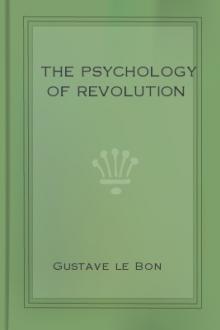The Psychology of Beauty by Ethel D. Puffer (good non fiction books to read TXT) 📕

- Author: Ethel D. Puffer
- Performer: -
Book online «The Psychology of Beauty by Ethel D. Puffer (good non fiction books to read TXT) 📕». Author Ethel D. Puffer
<1> W. Pater, The Renaissance: Essay on Giorgione.
In what consists the beauty of visual form? If this question could be answered in a sentence our whole discussion of the abstract formula for beauty would have been unnecessary. But since we know what the elements of visual form must do to bring about the aesthetic experience, it has been the aim of the preceding pages to show how those elements must be determined and related. The eye, the psychophysical organism, must be favorably stimulated; these, and such colors, combinations, lines as we have described, are fitted to do it. It must be brought to repose; these, and such relations between lines and colors as we have set forth, are fitted to do it, for reasons we have given. It is to the eye and all that waits upon it that the first and the last appeal of fine art must be made; and in so far as the emotion or the idea belonging to a picture or a statue waits upon the eye, in so far does it enter into the characteristic excellence, that is, the beauty of visual form.
B. SPACE COMPOSITION AMONG THE OLD MASTERS
ITHE preceding pages have set forth the concrete facts of visible beauty, and the explanation of our feelings about it.
It is also interesting, however, to see how these principles are illustrated and confirmed in the masterpieces of art. A statistical study, undertaken some years ago with the purpose of dealing thus with the hypothesis of substitutional symmetry in pictorial composition, has given abundance of material, which I shall set forth, at otherwise disproportionate length, as to a certain extent illustrative of the methods of such study. It is clear that this is but one of many possible investigations in which the preceding psychological theories may be further illuminated. The text confines itself to pictures; but the functions of the elements of visual form are valid as well for all visual art destined to fill a bounded area. The discussion will then be seen to be only ostensibly limited in its reference. For picture might always be read space arrangement within a frame.
In the original experimental study of space arrangements, the results of which were given at length on page 111, the elements of form in a picture were reduced to SIZE or MASS, DEPTH in the third dimension, DIRECTION, and INTEREST. Direction was further analyzed into direction of MOTION or ATTENTION (of persons or objects in the picture), an ideal element, that is; and direction of LINE. For the statistical study, a given picture was then divided in half by an imaginary vertical line, and the elements appearing on each side of this line were set off against each other to see how far they lent themselves to description by substitutional symmetry. Thus: in B. van der Helst’s “Portrait of Paul Potter,” the head of the subject is entirely to left of the central line, as also his full face and frontward glance.
His easel is right, his body turned sharply to right, and both hands, one holding palette and brushes, are stretched down to right. Thus the greater mass is to the left, and the general direction of line is to the right; elements of interest in the head, left; in implements, right. This may be schematized in the equation (Lt.)M.+I.=(Rt.)I.+L.
Pieter de Hooch, “The Card-Players,” in Buckingham Palace, portrays a group completely on the right of the central line, all facing in to the table between them. Directly behind them is a high light window, screened, and high on the wall to the extreme right are a picture and hanging cloaks. All goes to emphasize the height, mass, and interest of the right side.
On the left, which is otherwise empty, is a door half the height of the window, giving on a brightly lighted courtyard, from which is entering a woman, also in light clothing. The light streams in diagonally across the floor. Thus, with all the “weight” on the right, the effect of this deep vista on the left and of its brightness is to give a complete balance, while the suggestion of line from doorway and light makes, together with the central figure, a roughly outlined V, which serves to bind together all the elements. Equation, (Lt.)V.+I.
=(Rt.)M.+I.
The thousand pictures on which the study was based<1> were classified for convenience into groups,—Religious, Portrait, Genre, and Landscape. It was found on analysis that the functions of the elements came out clearly, somewhat as follows.
<1> One thousand reproductions of old masters from F. Bruckmann’s Classischer Bilderschatz, Munich, omitting frescoes and pictures of which less than the whole was given.
Of the religious pictures, only the “Madonnas Enthroned” and other altar-pieces are considered at this point as presenting a simple type, in which it is easy to show the variations from symmetry. In all these pictures the balance comes in between the interest in the Infant Christ, sometimes together with direction of attention to him, on one side, and other elements on the other. When the first side is especially “heavy” the number of opposing elements increases, and especially takes the form of vista and line, which have been experimentally found to be powerful in attracting attention. Where there are no surrounding worshipers, we notice remarkable frequency in the use of vista and line, and, in general, balance is brought about through the disposition of form rather than of interests.
The reason for this would appear to be that the lack of accessories in the persons of saints, worshipers, etc., and the consequent increase in the size of Madonna and Child in the picture, heightens the effect of any given outline, and so makes the variations from symmetry greater. This being the case, the compensations would be stronger; and as we have learned that vista and line are of this character, we see why they are needed.
The portrait class is an especially interesting object for study, inasmuch as while its general type is very simple and constant, for this very reason the slightest variations are sharply felt, and have their very strongest characteristic effect. The general type of the portrait composition is, of course, the triangle with the head at the apex, and this point is also generally in the central line; nevertheless, great richness of effect is brought about by emphasizing variations.
For instance, the body and head are, in the great majority of cases, turned in the same way, giving the strongest possible emphasis to the direction of attention,—especially powerful, of course, where all the interest is in the personality. But it is to be observed that the very strongest suggestion of direction is given by the direction of the glance; and in no case, when most of the other elements are directed in one way, does the glance fail to come backward. With the head on one side of the central line, of course the greatest interest is removed to one side, and the element of direction is brought in to balance. Again, with this decrease in symmetry, we see a significant increase in the use of the especially effective elements, vista and line. In fact, the use of the small deep vista is almost confined to the class with heads not in the middle. The direction of the glance also plays an important part. Very often the direction of movement alone is not sufficient to balance the powerful M.+I. of the other side, and the eye has to be attracted by a definite object of interest.
This is usually the hand, with or without an implement,—like the palette, etc., of our first examples,—or a jewel, vase, or bit of embroidery. This is very characteristic of the portraits of Rembrandt and Van Dyck.
In general, it may be said that (1) portraits with the head in the centre of the frame show a balance between the direction of suggested movement on one side, and mass or direction of attention, or both together, on the other; while (2) portraits with the head not in the centre show a balance between mass and interest on one side, and direction of attention, or of line, or vista, or combinations of these, on the other.
Still more unsymmetrical in their framework than portraits, in fact the most unfettered type of all, are the genre pictures.
As these are pictures with a human interest, and full of action and particular points of interest, it was to be expected that interest would be the element most frequently appearing. In compositions showing great variations from geometrical symmetry, it was also to be expected that vista and line, elements which have been noted comparatively seldom up to this point, should suddenly appear strongly; for, as being the most strikingly “heavy” of the elements, they serve to compensate for other variations combined.
The landscape is another type of unfettered composition. It was of course to be expected that in pictures without action there should be little suggestion of attention or of direction of movement. But the most remarkable point is the presence of vista in practically every example. It is, of course, natural that somewhere in almost every picture there should be a break to show the horizon line, for the sake of variety, if for nothing else; but what is significant is the part played by this break in the balancing of the picture. In about two thirds of the examples the vista is inclosed by lines, or masses, and when near the centre, as being at the same time the “heaviest” part of the picture, it serves as a fulcrum or centre to bind the parts—always harder to bring together than in the other types of pictures—into a close unity. The most frequent form of this arrangement is a diagonal, which just saves itself by turning up at its far end. Thus the mass, and hence usually the special interest of the picture, is on the one side, on the other the vista and the sloping line of the diagonal. In very few cases is the vista behind an attractive or noticeable part of the picture, the fact showing that it acts in opposition to the latter, leading the eye away from it, and thus serving at once the variety and richness of the picture, and its unity. A complete diagonal would have line and vista both working at the extreme outer edge of the picture, and thus too strongly,—
unless, indeed, balanced by very striking elements near the outer edge.
This function of the vista as a unifying element is of interest in connection with the theory of Hildebrand,<1> that the landscape should have a narrow foreground and wide background, since that is most in conformity with our experience. He adduces Titian’s “Sacred and Profane Love” as an example. But of the general principle it may be said that not the reproduction of nature, but the production of beauty, is the aim of composition, and that this aim is best reached by focusing the eye by a narrow background, i.e. vista. No matter how much it wanders, it returns to that central spot and is held there, keeping hold on all the other elements. Of Hildebrand’s example it may be said that the pyramidal composition, with the dark and tall tree in the centre, effectually accomplishes the binding together of the two figures, so that a vista is not needed. A wide background without that tree would leave them rather disjointed.
<1> Op cit., p. 55.
In general, it may be said that balance in landscape is effected between mass and interest on one side and vista and line on the other; and that union is given especially by the use of vista.
IIThe experimental treatment of the isolated





Comments (0)